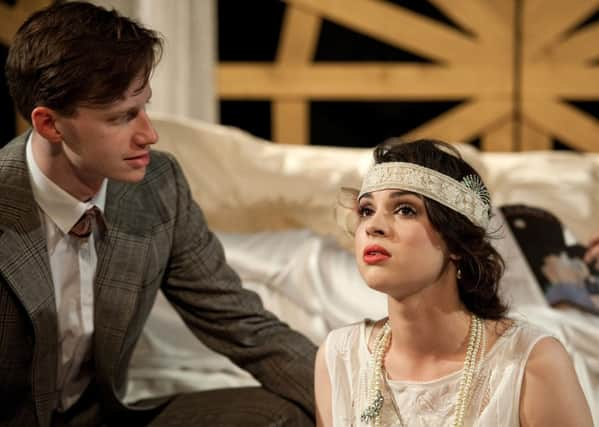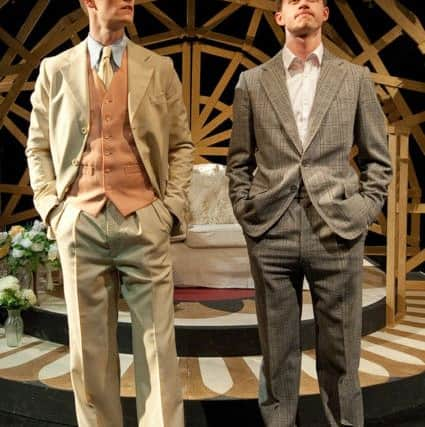The Great Gatsby (review)


We’ve waited years and, in 2013, three versions of The Great Gatsby have arrived at once. Northern Ballet gave a visually sterile interpretation of F Scott Fitzgerald’s classic story of the Jazz Age; Baz Leuhrmunn set it to rap music and filmed it in 3-D; and it’s returned to the stage at The Riverside Studios, Hammersmith, after a critically acclaimed run in London last year.
Of the three the stage production, starring, once again, the bewitching Matilda Sturridge as the poor little rich girl Daisy, is the most compelling. It doesn’t have the sort of budget that a West End show could command, the set is intimate and multi-purpose and the company are largely at the beginnings of their careers.
Advertisement
Hide AdAdvertisement
Hide AdBut Linnie Reedman’s adaptation gets beneath the very thin veneer of Long Island respectability to expose a story that is desperately tragic in the telling. The Jazz Age is usually portrayed in movies as a time of glamour and glitz with bright young things having an oh so wonderful time - a bit like our Swinging ‘60s.


But the truth is that only a handful of people, at the epicentre of society, enjoyed the lifestyle. Fitzgerald’s “in-crowd” were awash with cash but led a vacuous life where their most important decision was which party to gate-crash that night.
Daisy was “damaged goods”. She marries for money and sashays through her life with selfish abandon, ignoring her husband’s affairs and the feelings of others.
When her lover returns, the enigmatic and wealthy, Jay Gatsby, her life is thrown into turmoil.
Advertisement
Hide AdAdvertisement
Hide AdThe problem with The Great Gatsby is that audiences can have little sympathy for any of the key characters. There’s not a likeable one among them. Instead it serves as a cautionary tale about the American Dream and holds up for examination the hedonistic and decadent lifestyles of the super- rich.
The doe-eyed Matilda Sturridge (yes, she’s the younger sister of the ravishing actor Tom Sturridge) is just entrancing. It’s no wonder Gatsby is head-over-heels in love with her. She looks so innocent, her full lips quivering with longing every time the equally-beautiful Michael Lindall, as Gatsby, approaches.
Sid Phoenix, so memorable in the musical Hutch, which is running in rep with Gatsby, is Nick Carraway, Daisy’s cousin and narrator of the story though he doesn’t so much narrate but observe as the story unfolds. Phoenix gives an impressive performance as the detached outsider.
As with Hutch, Joe Evans, has come up with some original songs and the rest of the company provide the music when they’re not acting (a multi-talented group here – especially Patrick Lannigan who does a great turn as a rather dodgy gangster in-between playing the double bass).
Advertisement
Hide AdAdvertisement
Hide AdLindall makes a cracking Gatsby while Ian Knauer is convincingly menacing as Tom Buchanan.
The Great Gatsby runs until June 8. For tickets call the box office 020 8237 111 or go online www.riversidestudios.co.uk. You won’t be disappointed.